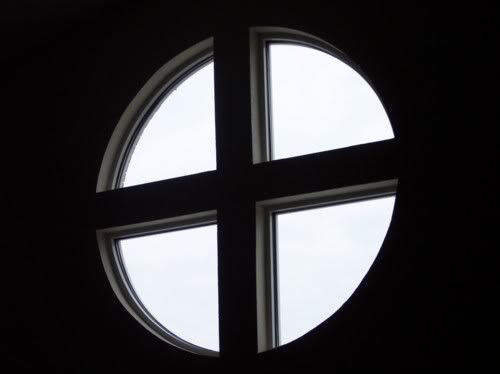You arrive in New York Harbor by boat. You see a towering statue. Without any more description than that, you probably conjure up the image of the Statue of Liberty.
You probably even know the story:
- It was given to us as a gift from France
- It was dedicated by President Grover Cleveland on 10/28/1886
- It was later inscribed with words from the poem "The New Colossus"
("Give me your tired, your poor, your huddled masses, yearning to breathe free, the wretched refuse of your teeming shore...")
I would argue...
THREE THINGS MAKE THE STATUE OF LIBERTY EFFECTIVE:
1. It is within the line of sight of people
(Even those of us who live far away from NYC see it on tv or in many other forms of media often)
2. Someone knows the story
We know it has a torch, and we know that it stands as a symbol to freedom, choice, and liberty, at home and abroad.
3. The people who KNOW the story have communicated it to others
We've heard the poem and it stirs within us a great, generous spirit, to share the dream of freedom and liberty.
All this reminds me of another memorial that was built and a question someone asked.
"What are these stones doing here?" (Joshua 22:9-34)
2 and 1/2 tribes were heading back across the Jordan River. They were going home to the land Moses had given them. They had been required to cross the Jordan the first time in order to help the other 9 1/2 tribes conquer the Promised Land. Now that the mission had been accomplished and the war was over, they were allowed to go back to their families and their land.
But before they made the trip, there was one thing left to do. They built an altar.
Initially the other 9 1/2 tribes were perplexed and angry. They saw the construction of this altar as heresy because the minority had not been instructed to build the altar as a place of worship. The majority was getting ready to go to war to wipe out the unruly minority. Until...
...they heard an explanation. This grouping of stones was NOT a place to offer sacrifices or a rebellious act of worship. It was to be a VISIBLE REMINDER.
It would remind future generations on BOTH sides of the Jordan River that they had kinsmen on the other side. It would remind future generations that BOTH groups had a place in the worship of Yahweh. It would remind BOTH groups that they were part of a history larger than themselves.
After hearing this explanation, the leaders of the whole nation "were glad to hear the report and praised God." A collective sigh of relief was breathed, backs were slapped, brows were wiped, and the Visible Reminder was set in place.
Fast forward to today.
You and I may never visit that part of the world.
And if we did, would THAT altar still be there today? And if it were, would every generation have been faithful to communicate to the next generation WHY it was there, and what purpose it served? (It only takes 1 generation that doesn't know the purpose of the altar to decide, "This pile of rocks isn't serving any purpose. Let's tear it down and scatter them around."
The Bible offers us a memorial, a reminder of God's activity in the world with people. But for it to be effective:
1. It must within the line of sight of people
(How are you doing at keeping the history of God's activity in front of your eyes, within earshot of your ears, alive within your heart and mind?)
2. Someone must know the story
(Are you placing yourself under the teaching of people you trust, who know the story and are willing to tell it to you?)
3. The people who KNOW the story must communicate it to others
(To whom are you telling the story? Will the people who come after you know why this Book is here and what it means? Tell them. As the old saint said, "Use words if necessary.")
Grace & peace
Friday, February 9, 2007
Subscribe to:
Post Comments (Atom)



No comments:
Post a Comment